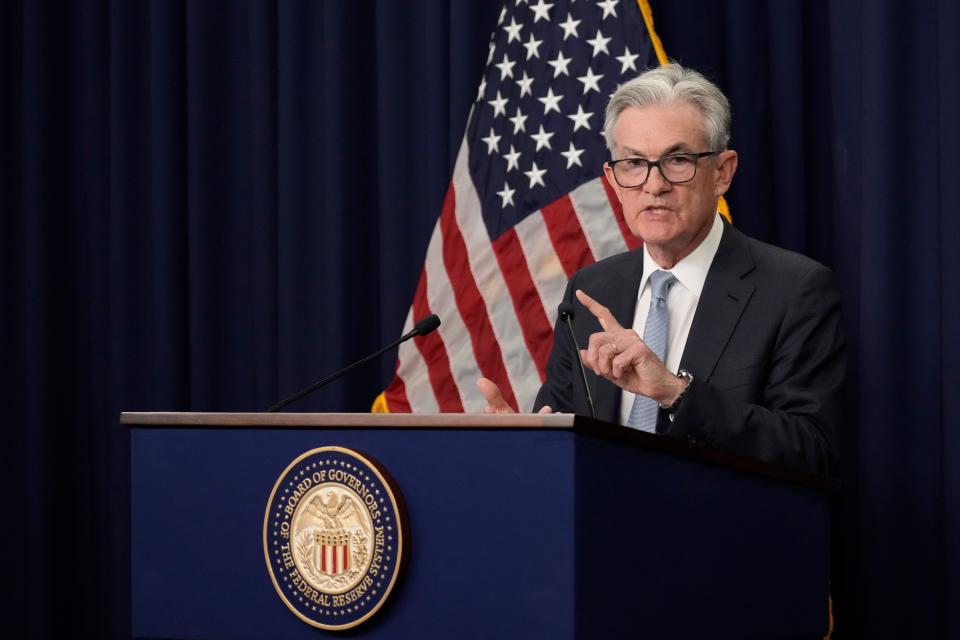Why does the Fed raise interest rates? And how do those hikes slow inflation?
As Americans brave record inflation, the Federal Reserve is continuing its efforts to rein in prices by jacking up interest rates.
The release of the Consumer Price Index earlier this month revealed that inflation rose 9.1% in June compared with the same time last year, marking another 40-year high.
June saw the Fed raise interest rates by 0.75 of a percentage point to a range of 1.5% to 1.75%, the biggest hike since 1994, USA TODAY reported. More hikes are likely, with the next one expected before the end of the month.
But why are hikes used to combat inflation and how do they work?

When will the Fed raise interest rates again?
The Fed is expected to announce another hike the next time its Federal Open Market Committee is scheduled to meet on Wednesday, July 27 at 2 p.m. ET. The FOMC is the body within the Fed that votes to set interest rates. Further hikes are expected at the rest of the committee’s meetings scheduled in September, November and December.
How does a Fed hike work? How does it affect prime rate, 10-year Treasury bond?
As the country’s central bank, the Federal Reserve is in charge of monetary policy. Its mandate is to promote “maximum employment and stable prices in the U.S. economy.” That means keeping inflation in check, with an annual target of 2%.
In 2020, the inflation rate was 1.4%. In 2021, it was 7%, according to the Consumer Price Index.
One of its main tools to throttle inflation is raising the federal funds rate, which is the rate banks charge each other for overnight loans.
When it raises this rate, interest rates go up across the economy: adjustable-rate mortgages, credit cards, home equity lines of credit, and other loans. Some of these are hitched to the prime rate, which is based on the federal funds rate, according to Bankrate.com. A rising federal fund rate also affects the 10-year Treasury bond, which impacts mortgages.
Borrowing money then becomes more expensive for consumers, who in turn spend less. Demand begins to wane, and inflation, in theory, starts to relent.
But some Americans, particularly seniors, see their coffers buoyed by higher bank savings rates.
How many times has the Fed raised interest rates in 2022?
The Fed has raised interest rates three times this year. The pandemic’s shutdown of the economy had kept rates near zero before the Fed raised rates by a 0.25 percent point in March, the first hike in more than three years.
An additional increase of 0.50 percentage point came in May, and then another 0.75 percentage point bump in June, putting the rate at its current range of 1.5% to 1.75%.
How much will the Fed raise rates?
Fed Chair Jerome Powell said at a press conference last month that a 0.50 point or 0.75 point increase is “most likely” at the FOMC’s July meeting. Some economists think a full percentage point move is possible but unlikely.
Economists surveyed by Bloomberg predicted a three-quarters percentage, or 0.75, point hike in July, with subsequent increases bringing the rate to a range of 3.25% to 3.5% by the end of 2022.
Are interest rate hikes good for stocks?
Interest rate hikes create volatility in the stock market. The value of future earnings tends to dip when higher interest rates are expected, according to U.S. Bank, making investors less eager to bid up stock prices.
Higher interest rates can stunt revenues for companiees, potentially damaging their growth and stock prices, according to Forbes.
Contributing: Paul Davidson, Medora Lee
This article originally appeared on USA TODAY: How Fed hikes work and why the Fed uses them to fight inflation




